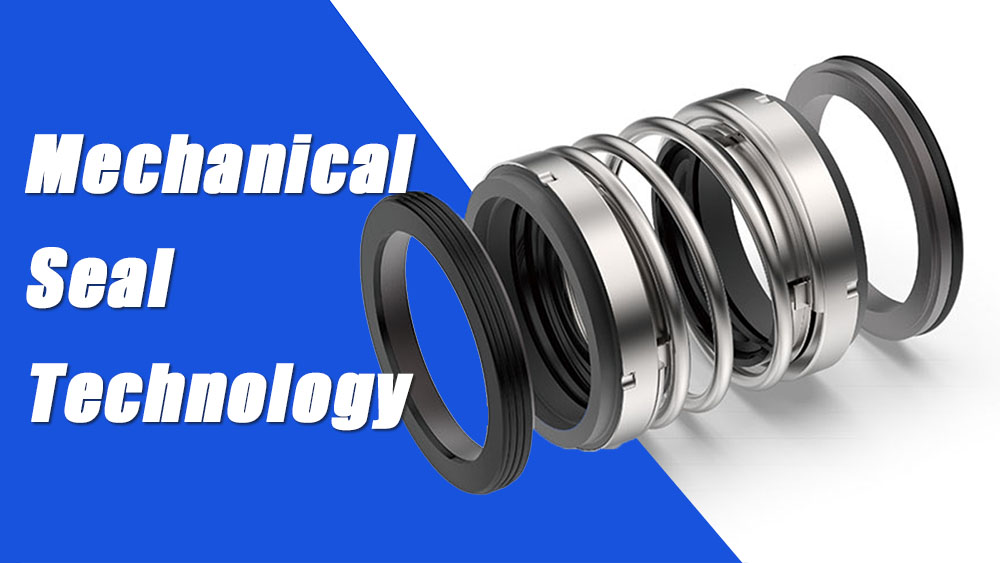+86 13816508465
Jul. 25, 2025

When it comes to ensuring leak-free operation in rotating equipment like pumps, mechanical seals are at the heart of reliable performance. These highly-engineered components prevent fluid leakage, safeguard equipment, and contribute to operational safety. But not all mechanical seals are created equal. Selecting the right type—whether single, double, or cartridge—can have a major impact on pump reliability, maintenance costs, downtime, and environmental compliance.
This article explores the three main types of mechanical seals, breaking down their designs, working principles, pros, cons, and ideal use cases. By the end, you'll have the insights needed to choose the best seal for your application.
Mechanical seals are devices designed to prevent fluid leakage between a pump's rotating shaft and the stationary pump housing. They provide a critical barrier that keeps fluids contained while allowing the shaft to rotate freely.
Basic Components of Mechanical Seals
A typical mechanical seal is composed of the following primary elements:
Rotating face: Mounted on the shaft, this component spins with the pump.
Stationary face: Affixed to the pump housing, this component stays static.
Secondary seals: O-rings or gaskets that prevent leakage between internal components.
Spring mechanism: Ensures consistent contact between rotating and stationary faces to maintain the seal.
Mechanical Seals vs. Traditional Packing Seals
Traditional packing seals rely on compressed soft materials to restrict leakage, but they require frequent adjustments and can cause shaft wear. Mechanical seals, on the other hand, offer greater efficiency, reliability, and longevity, making them the standard choice in modern pump systems.
Design
Single mechanical seals consist of one set of sealing faces—one rotating and one stationary. This straightforward design is common in pumps handling clean and non-corrosive fluids.
Pros of Single Seals
Economical: Lower upfront and maintenance costs.
Compact design: Suitable for installations with limited space.
Ease of installation: Straightforward setup reduces the need for specialized skills.
Cons of Single Seals
Limited fluid compatibility: Ineffective in abrasive, corrosive, or hazardous environments.
Leakage risks: Can have higher leakage risks if not properly maintained.
Lower pressure tolerance: Not ideal for systems with high pressure or severe operating conditions.
Common Applications
Single seals work well for:
Domestic water and irrigation pumps
Standard centrifugal pumps handling non-hazardous fluids
Light industrial applications requiring minimal sealing complexity
Design
Double mechanical seals feature two sets of sealing faces, separated by a barrier fluid. The barrier fluid prevents process leakage and enhances sealing reliability, making double seals ideal for challenging environments.
Types of Double Mechanical Seals
1. Back-to-back: Sealing faces are arranged in opposite directions; suitable for high-pressure applications.
2. Face-to-face: Sealing surfaces face each other, creating a compact design for moderate pressures.
3. Tandem: Positioned in sequence, offering backup sealing for critical processes.
Pros of Double Seals
Enhanced reliability: Excellent for aggressive, abrasive, or toxic fluids.
Environmental safety: Prevents environmental contamination by hazardous materials.
High-performance capabilities: Operates effectively under high pressure and temperature.
Cons of Double Seals
Higher cost: More expensive upfront and requires a barrier fluid system.
Maintenance-intensive: Demands more frequent monitoring and management.
Common Applications
Double seals excel in:
Chemical processing
Wastewater treatment plants
Slurry pump systems
Hazardous materials handling
Design
Cartridge seals are pre-assembled and pre-packaged units that include all component parts (sealing faces, secondary seals, springs, etc.) in a single cartridge. They come in both single and double configurations.
Pros of Cartridge Seals
Ease of installation: Plug-and-play design minimizes setup errors.
Reduces downtime: Speeds up replacement and maintenance.
Simplifies inventory: Pre-assembled units are ready to use and easy to standardize.
Cons of Cartridge Seals
Higher upfront cost: More expensive than standard single seals.
Larger footprint: Requires slightly more installation space.
Common Applications
Cartridge seals are favored in:
Industrial and heavy-duty pumps
Food and pharmaceutical processing
OEM systems requiring high precision
Critical installations with frequent seal replacements
Feature | Single Seal | Double Seal | Cartridge Seal |
Cost | Low | High | Medium to High |
Installation | Manual setup | Complex (requires skills) | Easy (pre-assembled) |
Leakage Protection | Basic | High | High |
Maintenance Level | Moderate | High | Low |
Suitable for | Clean, non-hazardous fluids | Toxic/abrasive media | All applications |
Downtime Risk | Medium | Low (if maintained) | Very Low |
Selecting the appropriate seal depends on several factors:
Fluid Type
Determine the properties of the fluid being pumped. For clean water, single seals are economical. Double seals are essential for hazardous or abrasive fluids.
Operating Pressure and Temperature
High-pressure or high-temperature systems require seals with enhanced capabilities, such as double or cartridge designs.
Ease of Maintenance
For facilities with minimal trained staff, cartridge seals simplify installation and reduce error risks.
Environmental and Safety Regulations
Industries handling toxic or environmentally-sensitive fluids should prioritize double seals to meet compliance standards.
Budget vs. Lifecycle Cost
While single seals have a lower upfront cost, double and cartridge seals offer longer service life and reduced downtime, which can save money in the long run.
Suggested Seal Types by Industry
Municipal Water Supply: Single seal
Chemical Processing: Double seal
Food and Beverage: Cartridge seal
Mining and Slurries: Double seal
Power Plant Operations: Cartridge or double seal
Understanding the strengths and limitations of single, double, and cartridge seals can significantly impact the performance, safety, and efficiency of your pumps. Single seals are budget-friendly for simple applications, double seals offer superior protection for harsh conditions, and cartridge seals provide unmatched convenience and reliability in industrial systems.
The right mechanical seal can prevent downtime, extend pump life, and ensure regulatory compliance. For precise application compatibility, consult with pump or seal manufacturers to make an informed selection. Carefully tailored choices are the key to operational excellence and peace of mind. Explore the possibilities of mechanical seal technology today!
Address
No.17 XeDa Jimei Ind. Park, Xiqing Economic Development Area, Tianjin, China
Telephone
+86 13816508465
QUICK LINKS